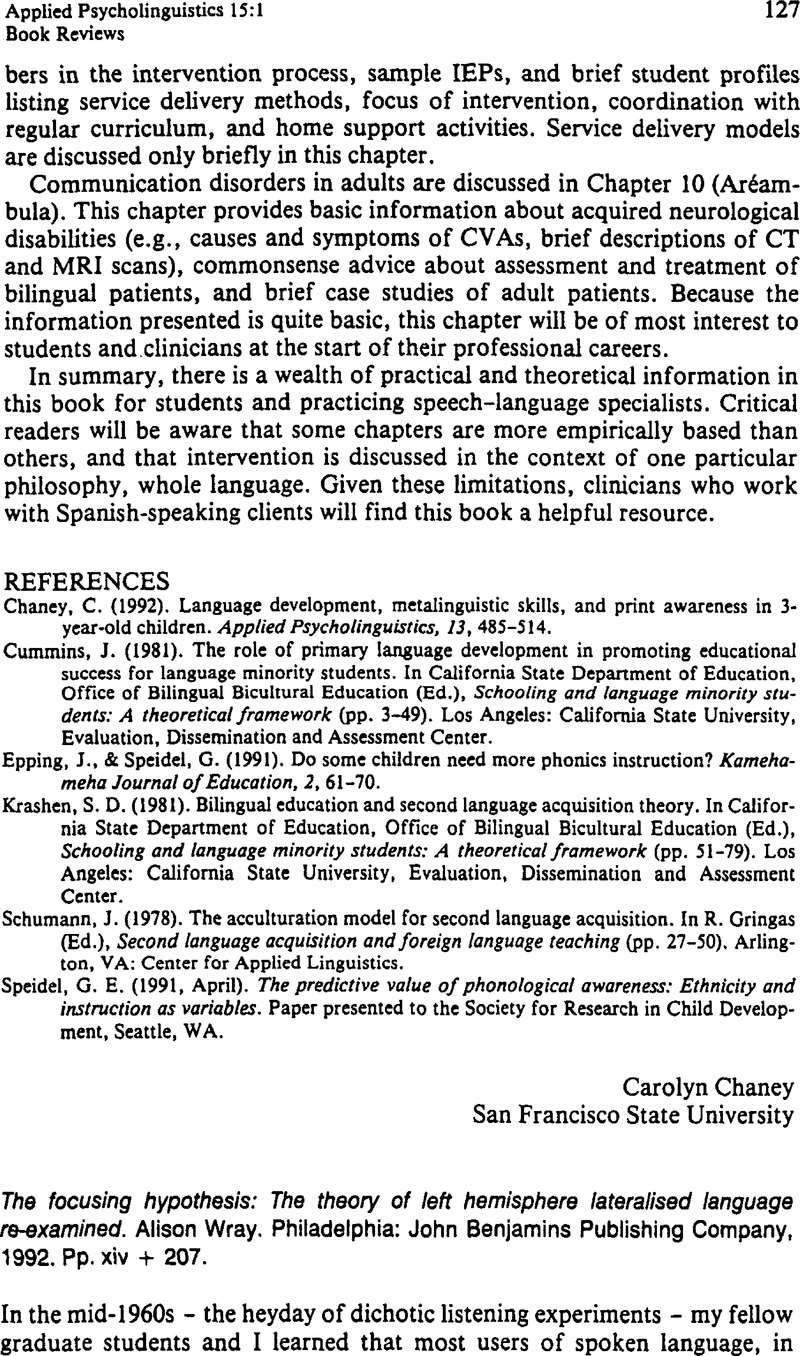No CrossRef data available.
Article contents
The focusing hypothesis: The theory of left hemisphere laterailsed language re-examined. Wray Alison. Philadelphia: John Benjamins Publishing Company, 1992. Pp. xiv + 207.
Published online by Cambridge University Press: 28 November 2008
Abstract
An abstract is not available for this content so a preview has been provided. Please use the Get access link above for information on how to access this content.

- Type
- Book Reviews
- Information
- Copyright
- Copyright © Cambridge University Press 1994
References
REFERENCES
Locke, J. L. (1992). Neural specializations for language: A developmental perspective. Seminars in the Neurosciences, 4, 425–431.CrossRefGoogle Scholar
Locke, J. L. (1993). The child's path to spoken language. Cambridge, MA: Harvard University Press.Google Scholar
Locke, J. L. (in press). Phases in the development of linguistic capacity. In Bolis, C. L., Gajdusek, D. C., and McKhann, G. (Eds.), Discussions in neuroscience.Google Scholar
Ross, E. D. & Mesulam, M.-M. (1979). Dominant language functions of the right hemisphere? Prosody and emotional gesturing. Archives of Neurology, 36, 144–148.Google Scholar
Shacter, D. L. & Church, B. A. (1992). Auditory priming: Implicit and explicit membry for words and voices. Journal of Experimental Psychology: Learning, Memory and Cognition, 18, 915–930.Google Scholar
Van Lancker, D. (1991). Personal relevance and the human right hemisphere. Brain and Cognition, 17, 64–92.CrossRefGoogle ScholarPubMed
Wood, C. C., Goff, W. R. & Day, R. S. (1971). Auditory evoked potentials during speech perception. Science, 173, 1248–1251.CrossRefGoogle ScholarPubMed




